Your due date is getting closer, and there are a bunch of thoughts swimming through your mind. One of the loudest may be: what is my baby going to look like?
Whether both parents have the same or similar skin tones, or one parent is lighter or darker than the other, there’s a range of tones your baby’s skin can have.
View in gallery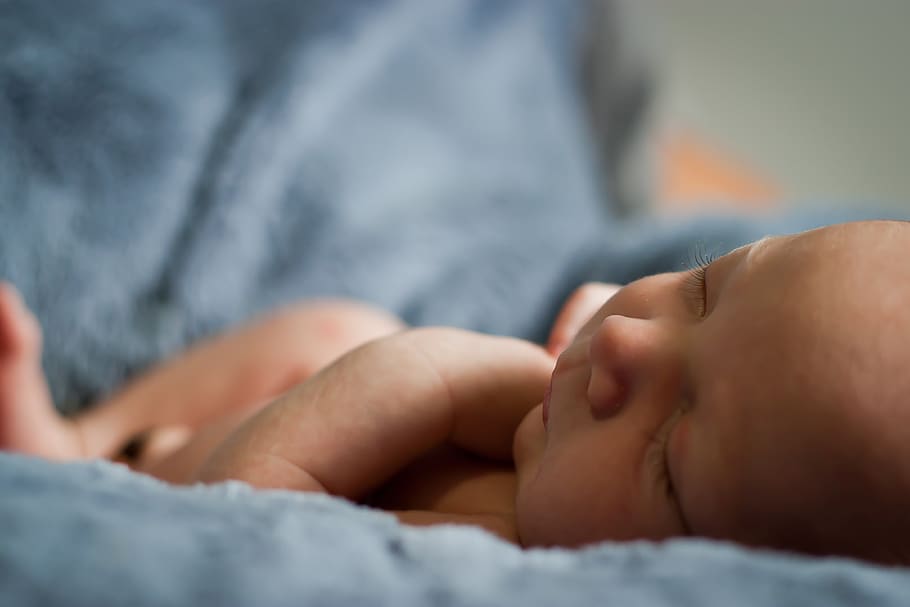
Interested in understanding the complexities surrounding skin tone, eye color, and more in babies? I’ve done a good deal of research to help you further understand the details behind it all.
How is Baby’s Skin Color Determined?
It’s easy for many to believe that skin color, like many other things about your baby, is determined by genetics. In actuality, it goes far deeper than that.
Melanin plays a major role in determining your child’s skin color as well as their hair and eyes. When someone produces a small amount of this natural skin pigmentation, their skin may be lighter. Those that produce more tend to have darker tones.
Other substances contribute to skin color as well such as a variance in genetics as well as sun exposure over time.
Which Parent Determines Skin Color?
View in gallery
This is another question that doesn’t have a cut and dry answer since it’s a host of genetics that factor into skin color. The Human Genome Project even estimated that we have anywhere between 20,000-25,000 genes.
Babies receive two copies of every gene with each parent providing one. Skin color is known to be polygenic, which is the result of a combination of multiple genes. Which genes your child inherits, in this case, are random.
Because of this randomization, it’s impossible for science to truly tell which parent will determine the skin color.
In biracial children, for instance, some believe that the darker melanin will win out. However, history has proven that this isn’t always the case since, again, the gene inheritance is a random occurrence.
Can White and Black Parents Give Birth to a White Child?
View in gallery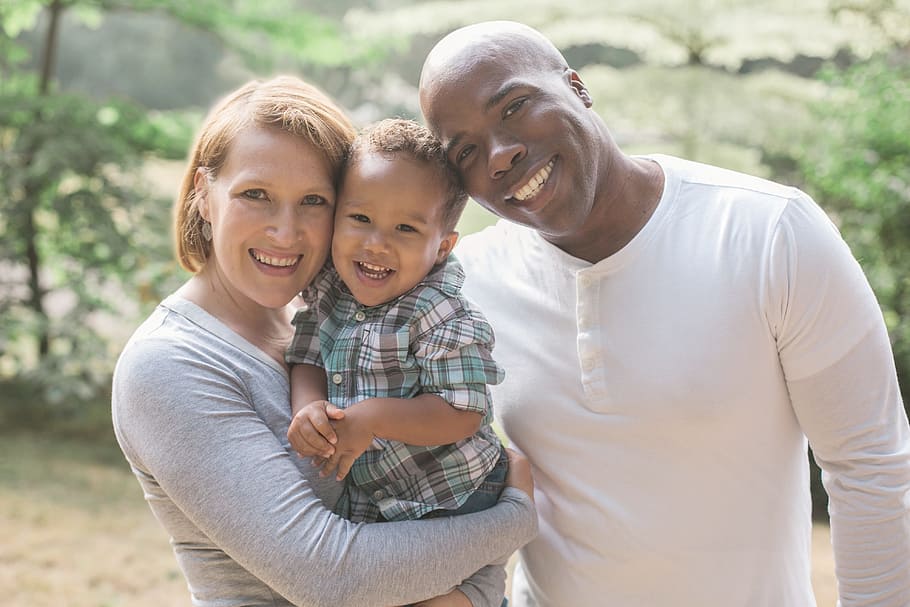
You’ve probably heard of the phenomenon of parents giving birth, only to be shocked about the color of their skin.
Many of these cases make national news. For instance, there are twins where one is born with light features from their skin color to their eyes, and the other has a darker skin tone, brown eyes, and dark hair.
To answer the question then: yes, white and black parents can easily give birth to a white child. This is another case where genetics are random and unpredictable.
Genetic Disorder
Of course, a white and black parent can also have a “white” baby in the case of albinism. This goes beyond skin color as the condition can affect the hair and eyes as well.
Also, this isn’t just a result of a white and black parent. Rather, babies born of people of any color can come out with albinism as it’s not limited to race or ethnicity.
When Does a Baby’s Skin Color Stop Changing?
View in gallery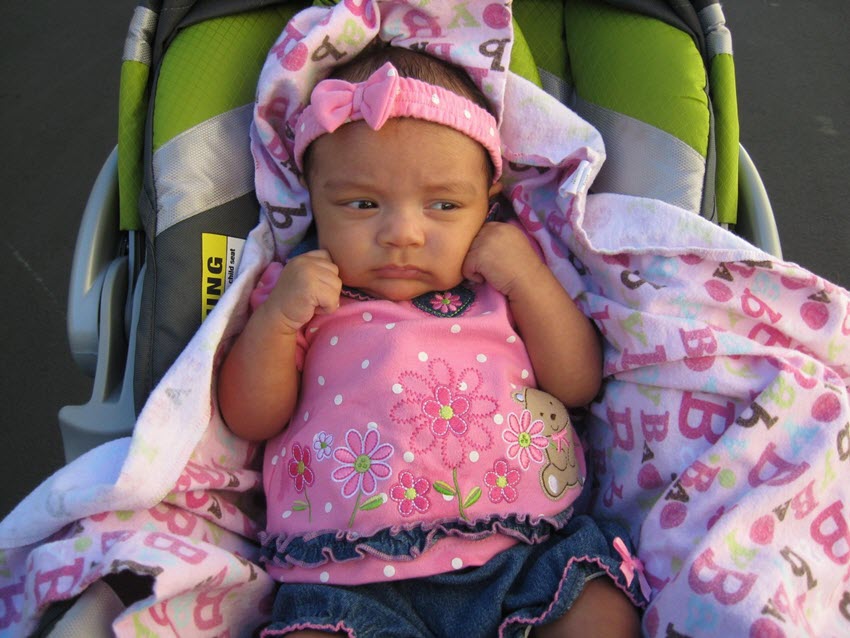
Your baby’s skin goes through a number of changes from birth and onwards. In fact, skin color starts to take effect by your third trimester. From there, pigmentation begins to develop, but babies can still be born with a red-like or blue-like hue regardless of the color of their parents’ skin.
After birth, however, your baby’s skin will begin to undergo a change because cells known as melanocytes kick up in their activity.
Beforehand, this process isn’t as active, which is why so many babies are born with light skin. However, melanocytes produce melanin, a topic I touched on earlier, thus your baby’s skin color can start to change.
As for when this process will ever stop, there is no set answer for this. Some babies may reach their final skin pigmentation after a few months. Other parents notice their babies darkening throughout their first year of life.
Beyond genetics at play and the development of melanin, outside factors such as sun exposure can also play a role in your baby’s continued skin change. Those babies exposed to UV rays more often than not may see more of a darkening compared to babies who don’t see that much sun.
What Color will my Baby’s Eyes Be?
View in gallery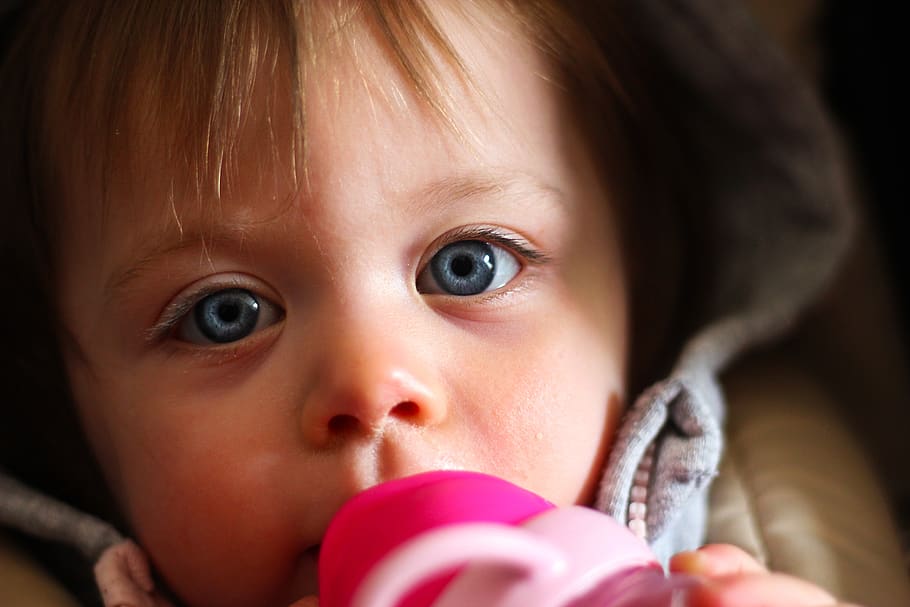
Now that you, hopefully, have a better understanding of skin color, it’s time to address the eyes.
Eye color, or more specifically the color of the iris, is another factor about your baby that’s determined by a host of genetics. You may look at yourself or the baby’s other parent to try and guess at what the child’s eyes will look like, but similar to skin, there’s no guarantee.
Remember how I mentioned the production of melanin truly begins after birth? Knowing this, babies are generally born with eyes that are blue or colorless. Once melanin production begins, you’ll start to see the true color of their eyes.
What that color is, depends on how much melanin winds up in the iris. A greater amount of melanin results in brown eyes.
Babies that don’t have a lot of melanin wind up with blue or gray eyes.
Color Variations
Something that is further interesting about your baby’s eye color is the variations found. Beyond melanin, your baby’s eye color is also determined by pheomelanin and eumelanin.
Pheomelanin produces pink or reddish tones, which is a major player in developing red hair. Eumelanin is more blackish-brownish, and this helps determine how dark the hair, skin, and eyes will be.
Depending on how these two subtypes of melanin are distributed, your baby’s eyes can be different shades such as the likes of green and hazel.
Further variations can occur within the iris, which is why many people wind up with flecks or speckles of different colors.
Which Parent Determines the Eye Color of Baby?
The answer to this question is similar to trying to figure out which parent determines hair color. In short, both parents determine the color of the eyes just like they both decide the color of the hair.
As I explained before, genetic inheritance is a randomized event. Just because you have blue eyes and the baby’s other parent has hazel eyes, you can’t exactly say with certainty that the baby’s eyes will be one way or the other.
With such a multitude of genes involved in the process, your baby’s appearance becomes a more complex situation, and a fun one to figure out as they grow.
Disorders
Another thing to consider, much like with skin color, is the chance for genetic disorders. For instance, Waardenburg syndrome can affect pigmentation and lead to the likes of heterochromia, which is when someone is born with two different eye colors.
Waardenburg syndrome is something that can be inherited if one parent has the condition as well. If this is the case, then there’s a higher chance that the baby may come out similar to the parent with said condition.
Can Brown-Eyed Parents Have a Blue-Eyed Baby?
It may seem impossible, but it’s actually not uncommon for parents with brown eyes to produce a baby with blue eyes. The complexities of genetics come into play yet again in this case.
Let’s start with dominant and recessive genes. Brown is seen as a dominant gene, while the likes of blue or green are more recessive. Dominant tramples over recessive genes in most cases, so with that said, how is it possible for brown-eyed parents to create a blue-eyed baby?
Well, one or both of those brown-eyed parents may be carriers for the other genes. Brown is merely a sign that there is a dominant gene in place, but it doesn’t mean it’s the only one there.
Sometimes, the recessive gene wins out, and you get a baby that has a completely lighter eye color than their parents.
If this does happen to you, don’t start to freak out. Rather, consider your family history to see if anyone down the line, grandparents and great-grandparents, have the eye color. Understanding the history on both sides of the family can help you figure out if you’re a carrier of the recessive genes.
What Color will my Baby’s Hair Be?
You may be tired of reading this by now, but it’s a point that needs to be made: babies receive a combination of genes from both parents. Because of this fact, there’s a spectrum of hair, eyes, and skin color that they can have.
It’s unheard of to know what their hair color will be before you have them, but how the parents look and the rest of the family can always serve as a good indicator of what might come.
There are many families that all have brown hair, red hair, or blonde hair. It’s not uncommon, but it’s also normal for families to have a range of hair colors such as one parent with red hair and a baby with red hair, or two brown haired parents having a child with lighter hair color.
In this case, it matters if darker haired parents carry a recessive gene that can cause an unexpected hair color in a child.
What Determines Hair Color?
Dominant and recessive genes are as important as ever in this situation. As I mentioned before when speaking about eye color, the subtypes of melanin known as pheomelanin and eumelanin are indicators of the type of pigmentation your baby mainly receives.
A baby with excessive pheomelanin will likely develop various shades of red hair. Those with eumelanin are more likely to have darker hair.
Now, that still begs the question of how this is determined when parents have different hair colors. If a parent with black hair, for instance, has a recessive amount of pheomelanin, while the other parent is dominated with pheomelanin, there’s a chance that the baby will have either dark hair or red hair.
In some situations, both parents have dark hair, yet one of their children comes out a redhead. This is further indication that people can carry plenty of recessive traits that can determine a baby’s hair color instead of the more obvious, dominant one.
Does a Baby’s Hair Change Color?
Likewise, with a baby’s eye color and skin color, their hair can indeed evolve after birth and up into childhood years.
The melanin in their system continues to develop after they’re born. As such, there is a high chance that the hair color you see when they’re two-months-old won’t be the hair color that you will see by the time they reach the toddler stage and beyond.
There are some babies that may start out in life with dark hair, but they wind up developing lighter, if not blonde, hair as the months and years go by. It can be an interesting transformation that adds more excitement to watching your child develop after birth.
Will my Baby Have Dimples?
View in gallery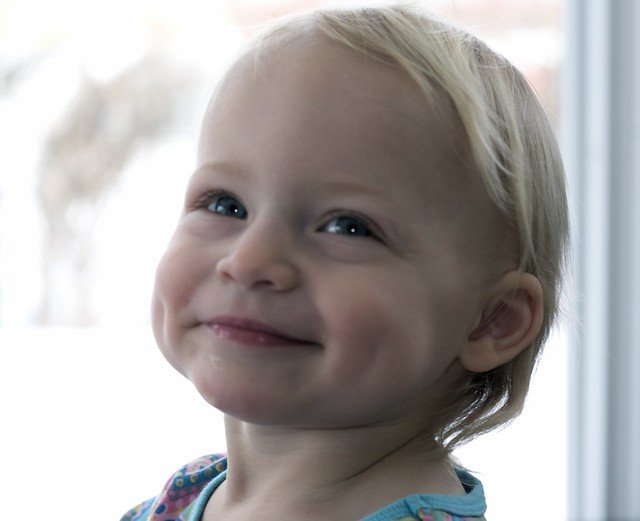
Dimples, especially cheek dimples, are sometimes so obvious that it catches our eyes right away when watching a baby laugh or smile. Whether you have dimples or simply think they’re just adorable, you’re probably wondering about if your baby can have them.
Well, it’s complicated, just like everything else I discussed here. Some people have long believed that dimples were inherited, but there isn’t actually much scientific proof or research backing up that claim.
Some parents with dimples produce babies with dimples, while others don’t.
Cheek dimples are actually formed because of a variation in the muscles that we use to smile. These muscles separate once they go down to the mouth, which can cause the dimple to form.
It can happen while your baby is still a fetus, which is why so many people believe it to be a birth defect. However, some babies can lose their dimples as they grow up. Other people may develop dimples later in life.
It’s yet another fascinating phenomenon where the total reasoning behind it isn’t completely understood.
Conclusion
Having a baby is such an exciting journey as, in spite of how either parent looks, what your baby will look like is still a mystery. They can resemble the mother more, or the father more, or be a wonderful combination of both.
Babies remain a blank slate considering they inherit a random set of genes from both parents. Because of this, it may be helpful to manage any expectations about their skin, hair, or eye color as in the magical creation of babies, anything is possible.






